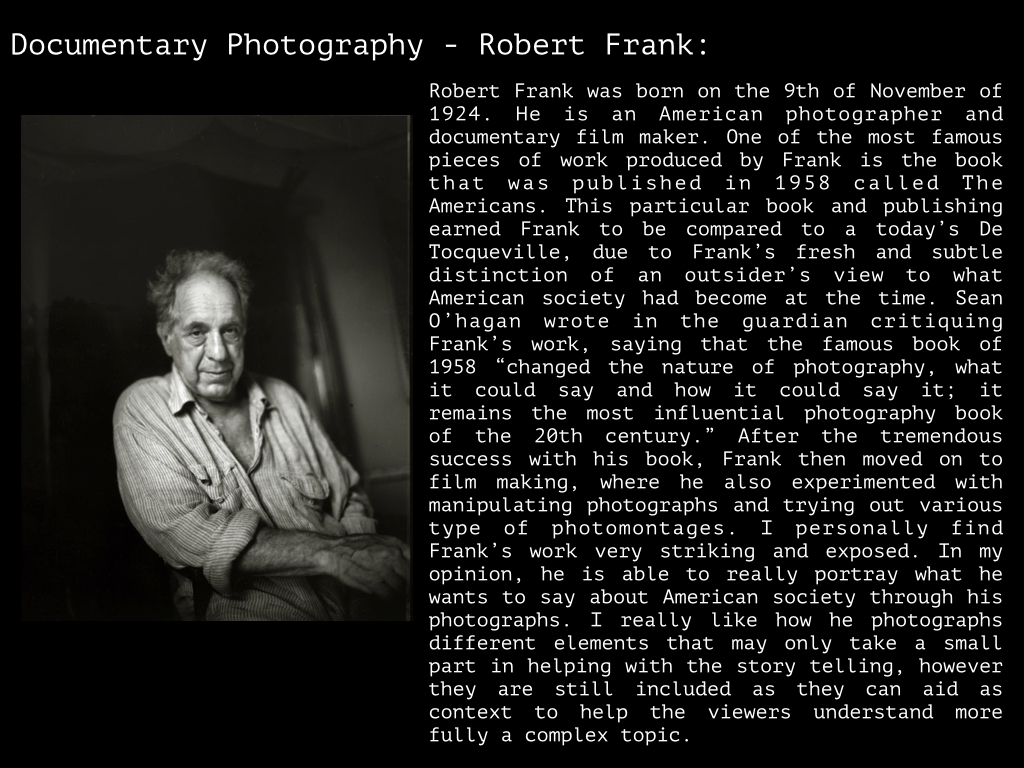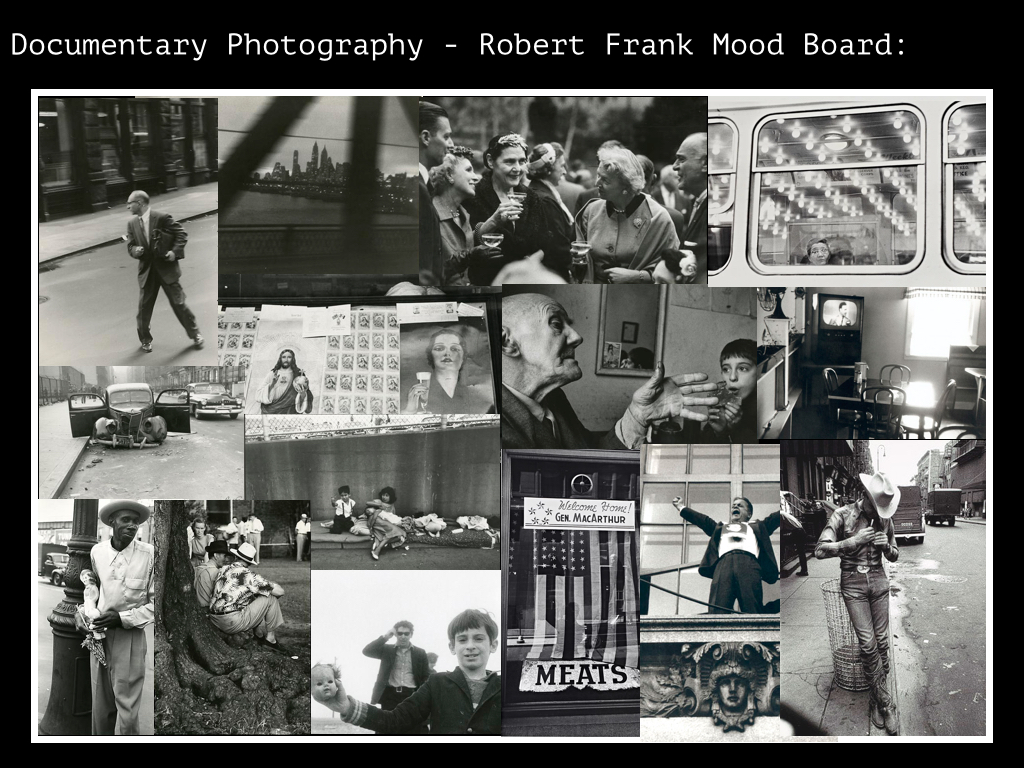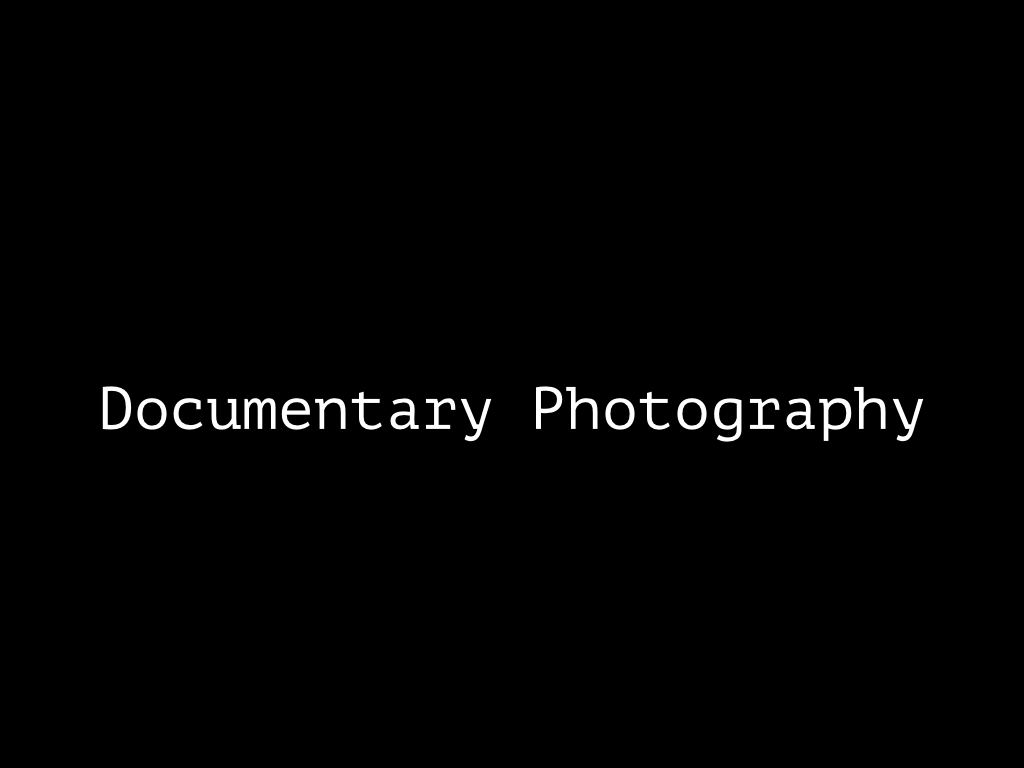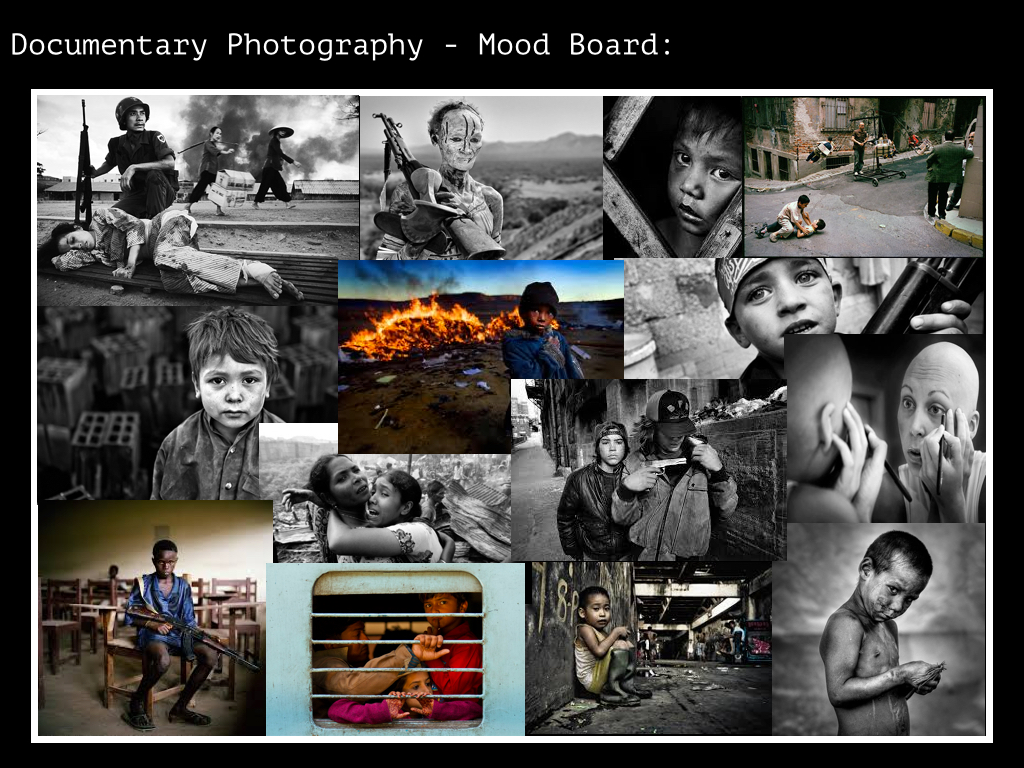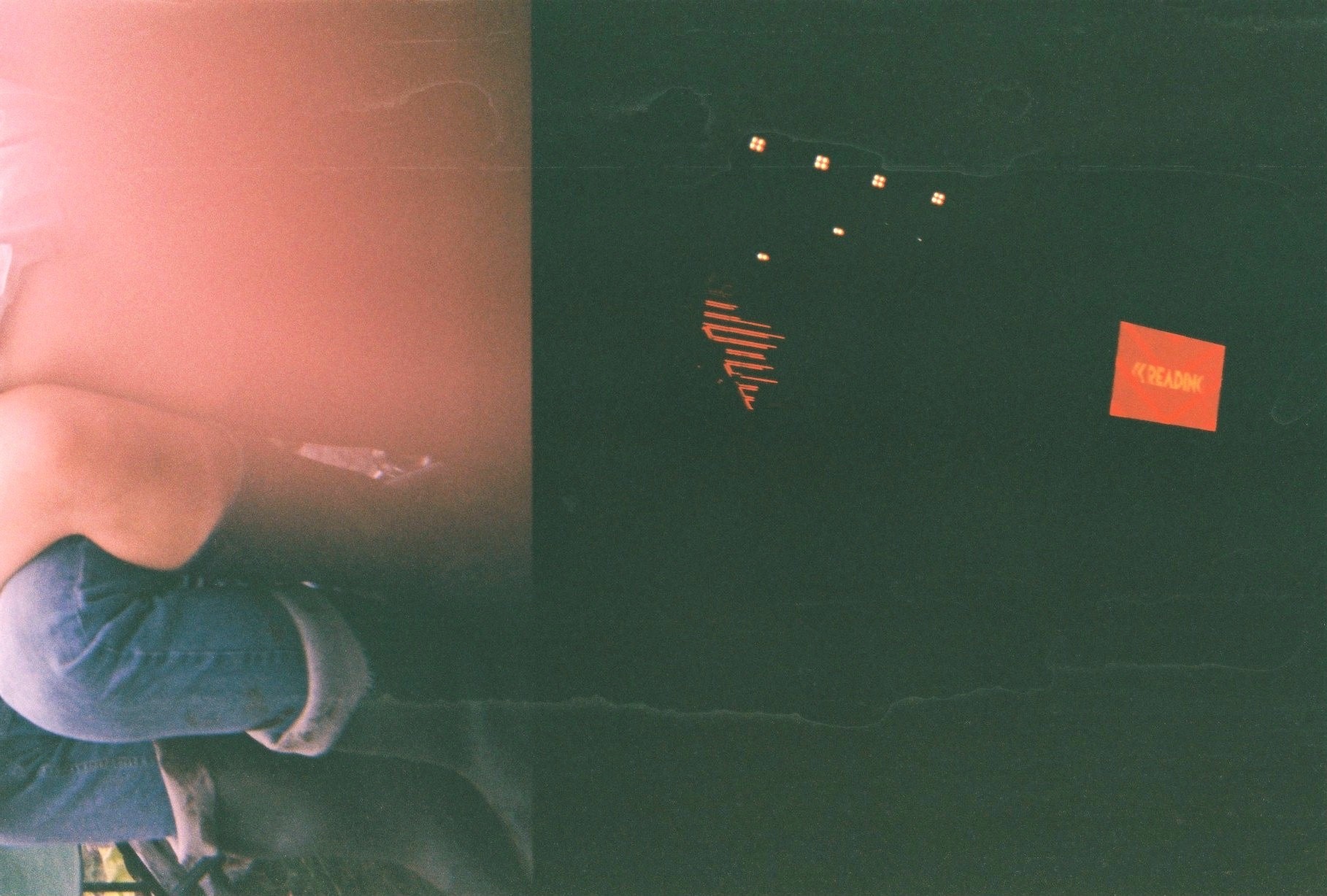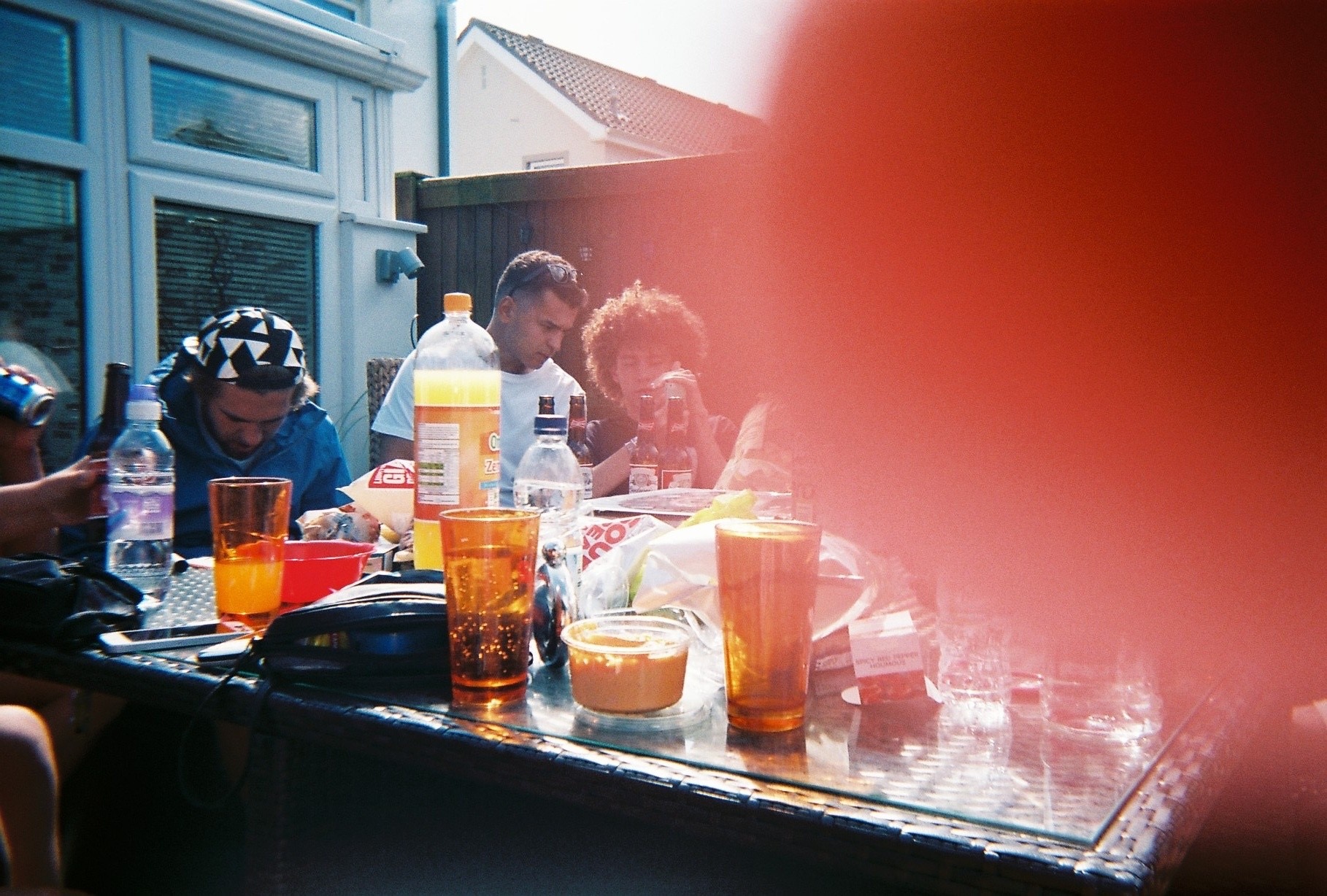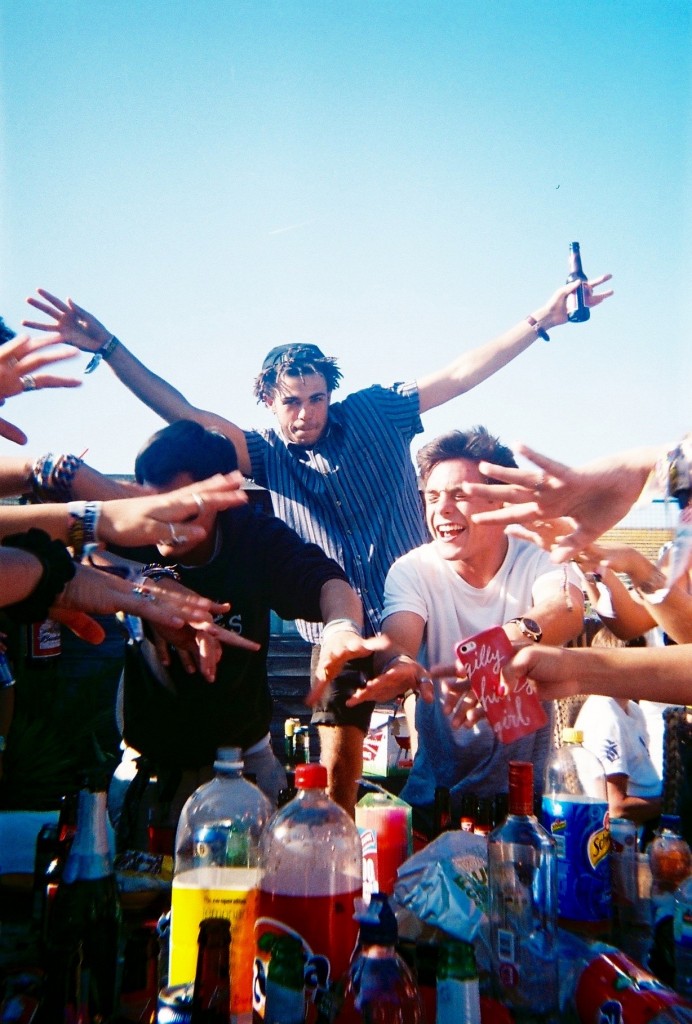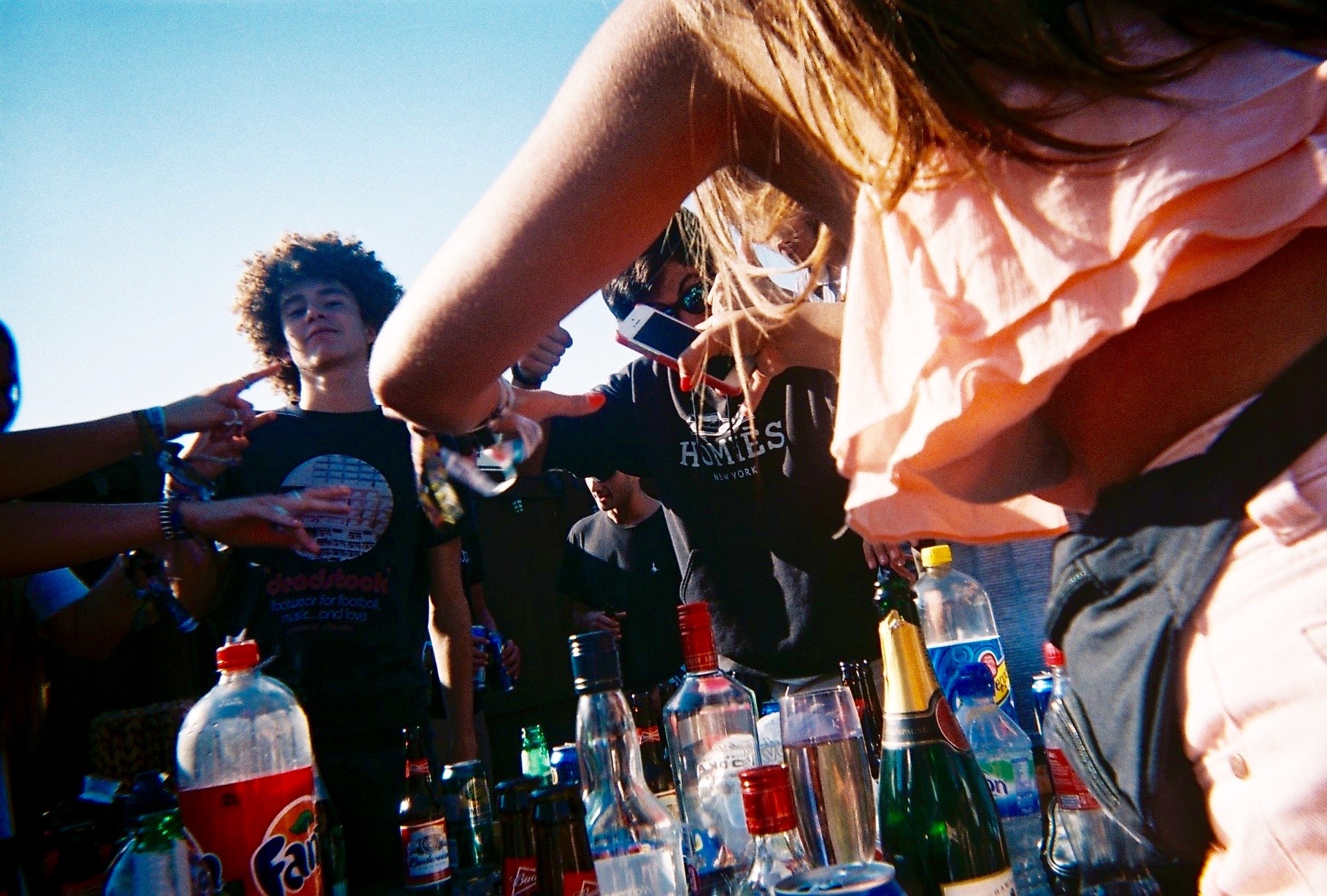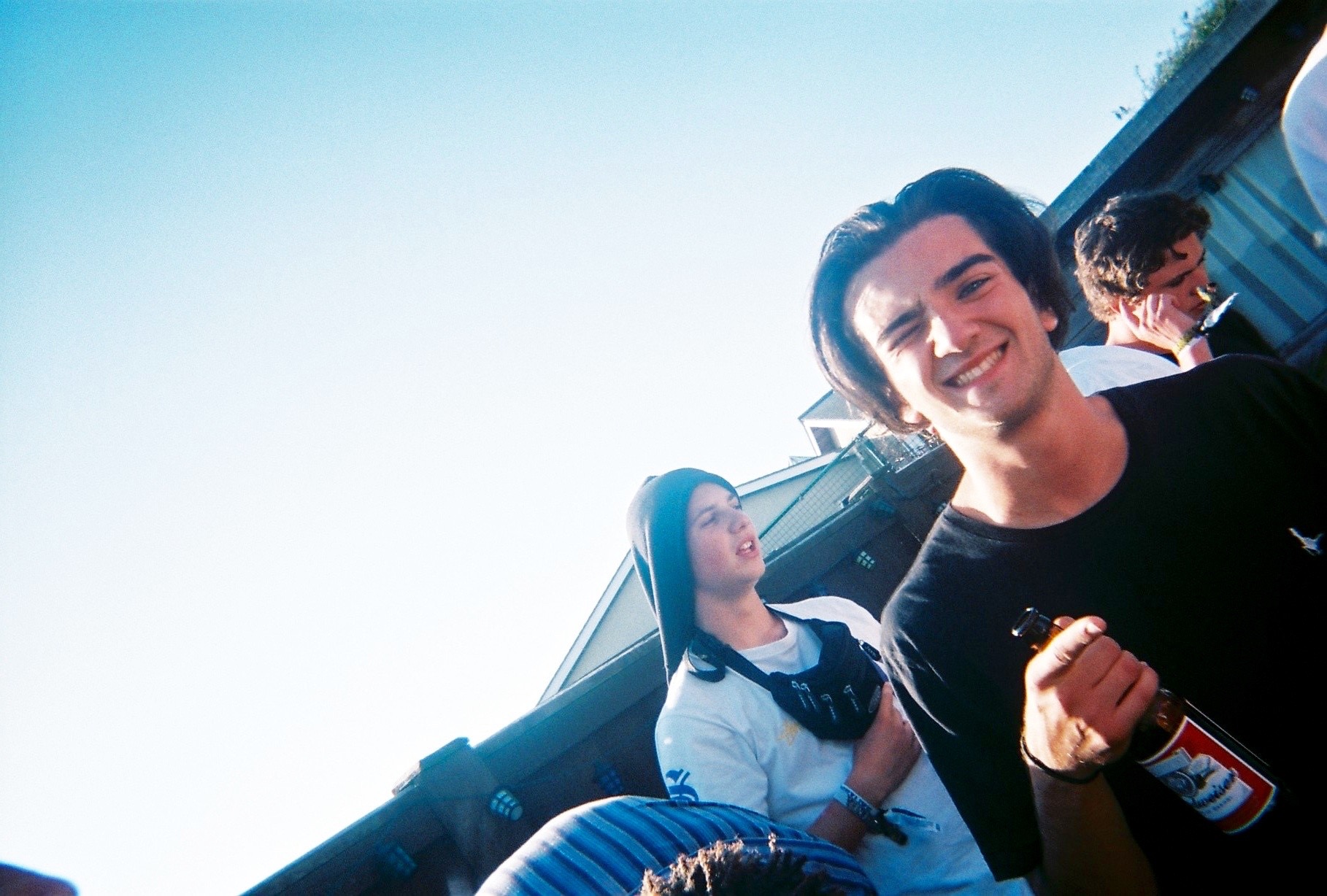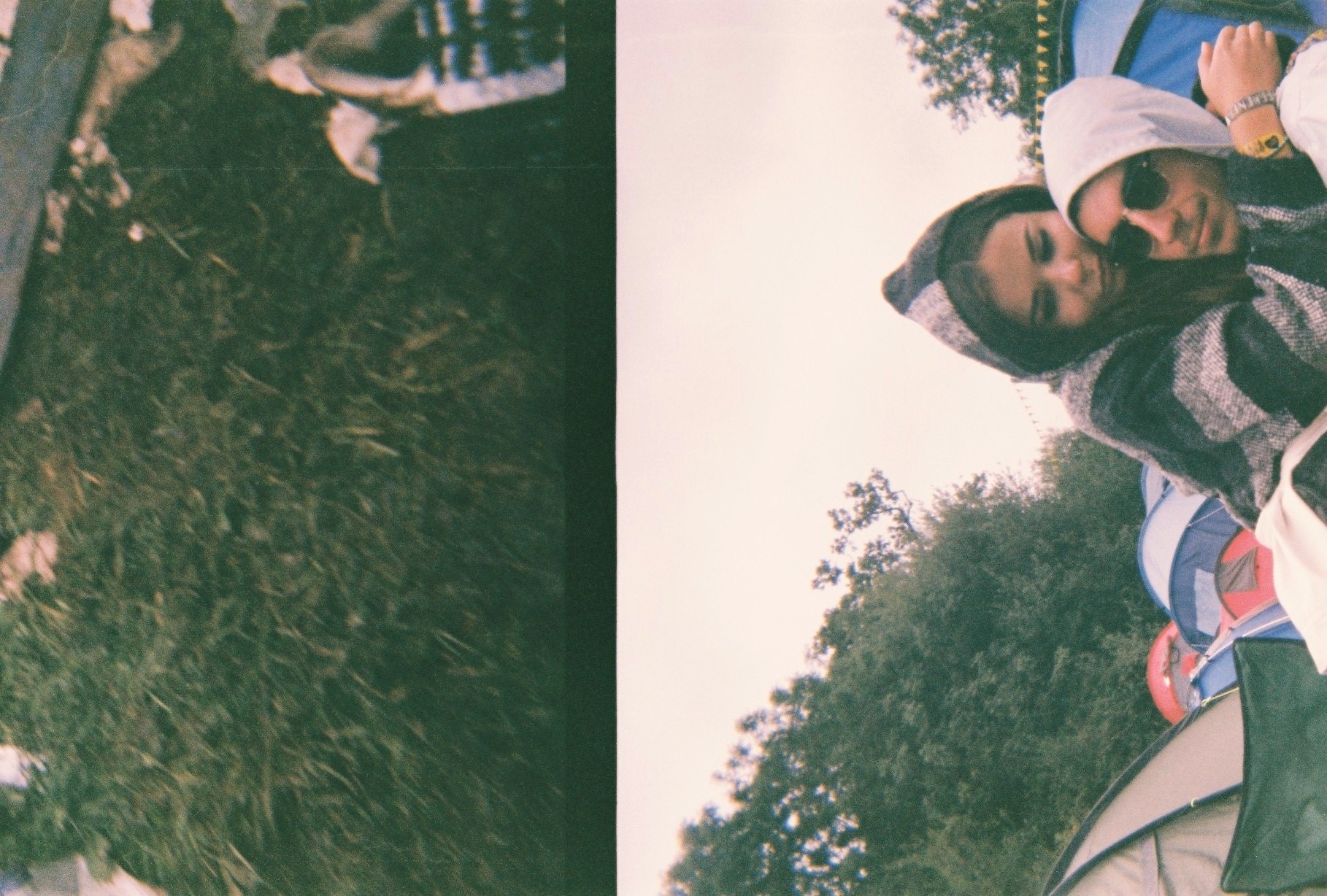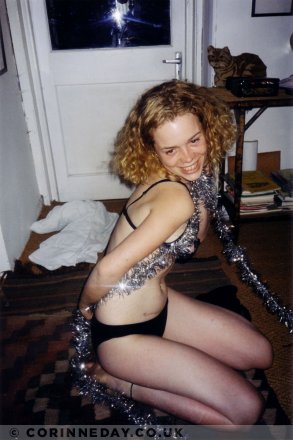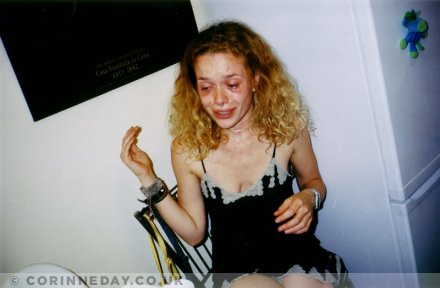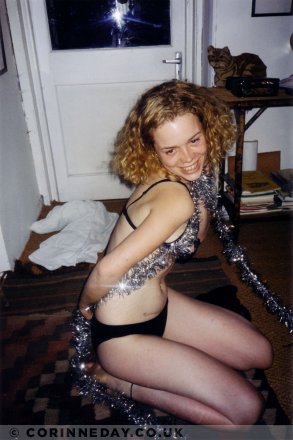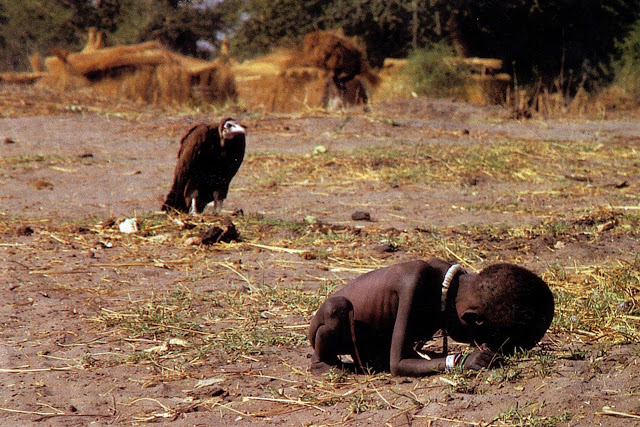Category Archives: Evaluation
Filters
Documentary Photography:
Jeff Wall – Analysis of Work
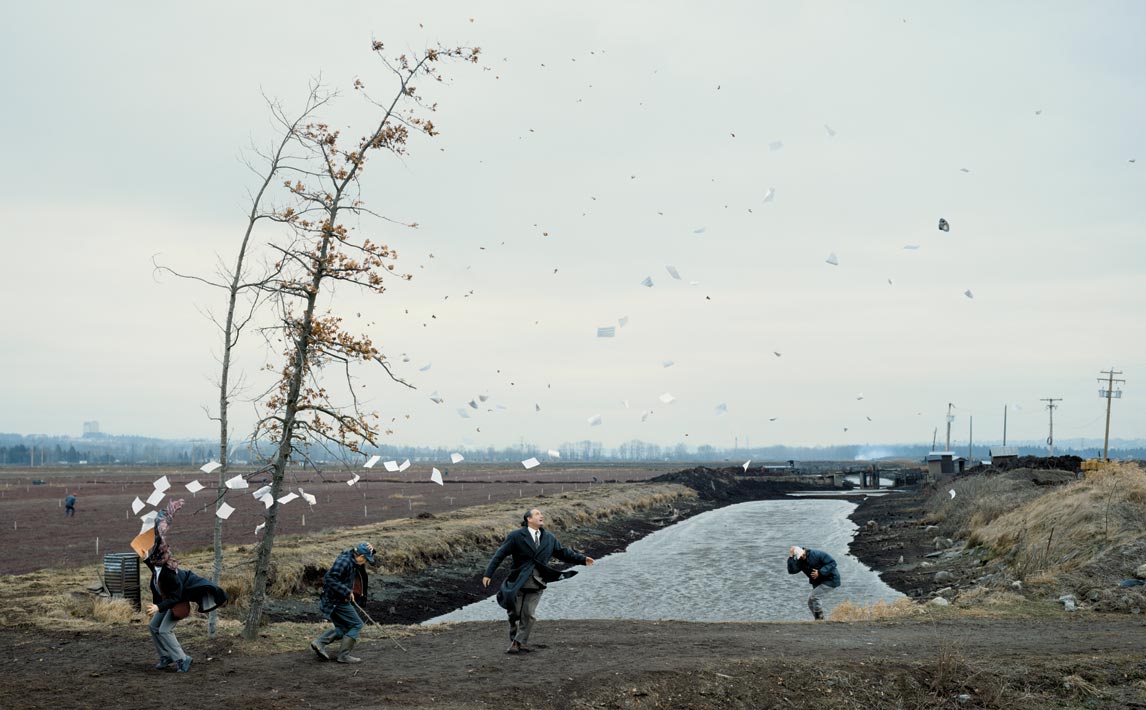
This photograph by Jeff Wall, shows four people battling against a ferocious gust of wind. Wall is attempting to highlight the power of nature, and represent humanity as helpless to its force. It is a very dramatic image with papers from one of the men’s briefcase flying everywhere, and and all other men attempting to shield themselves from the wind. This is a tableau photograph however there are clear elements of this image that were not staged and so affect the composition of the image to some degree. I find the composition to be very effective, and the photograph is very visually striking.
Natural Elements of the Image
Lighting
- The overcast day is out of the photographers control. It helps to make the image very dramatic because it establishes a dark and sinister mood, which is a cold, dramatic theme. The greyness from the sky gives an overall image which is low in saturation. This provides the image with a sense of subtlety as all aspects of the image blend in and compliment each other. Although Wall had no actual control over the weather in this image, I do believe however that Wall deliberately waited for such weather conditions as the achieve the effect it does
Wind
- The wind is an integral part of this image, again outside of the photographer’s control. Likewise to the overcast day, Wall has chosen to photograph at the moment when there is a gust of wind, an important selection because it completely defines the image, as the whole theme and composition is based on the effect the wind has.

Corinne Day Inspired Shoots – COMMUNITY
Before the school summer holidays, I briefly looked over ‘Corinne Days Diary’. Over the summer, attending parties throughout the summer and Reading Festival at the very end of the summer. Over these events i captured some images that represented a more PG version of Corinnes images.
Here are the images –
All of the above images were taken on disposables, i took 6 disposable cameras to Reading festival as i love the style the cameras produce. They give a rough old look which i feel matches this topic perfectly. One of my favorite images is the two below. These were both taken at Reading and i love the informal feel in both.
This image was damaged by water. It rained nearly every day at Reading and water got into one of the cameras. However i feel it has benefited the image as it has given it texture and an even older look. The floor looks very worn and tired, similar to the picture and the subjects in the image. The girl photographed was heavily intoxicated, taking a surprise image turned out to be one of the best images taken. 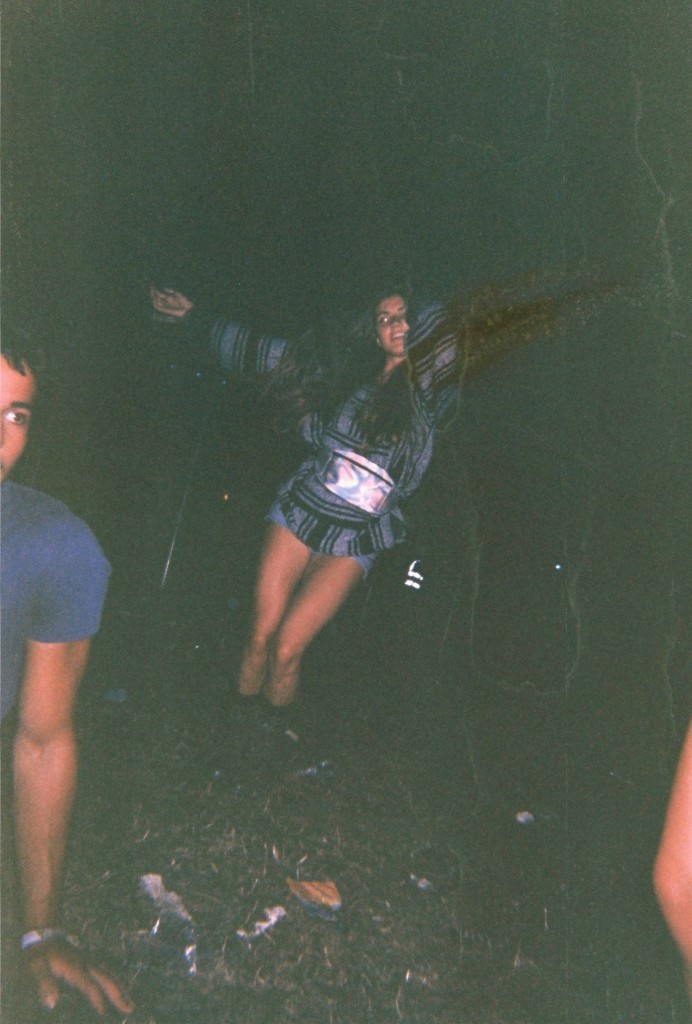
The next image has also been damaged by water and shock. Over the course of the week i dropped the camera numerous times. This resulted in a two of the images being split and merged together. However i loved this affect as it makes the image look older again and more interesting as you have to work out what it actually is. The two subjects in the photograph are also unaware the image was being taken, sharing a hug they are unknowingly being photographed.
This is also the other half of the damaged image.

“Heroin Chic”
Corinne Day flourished in the 90’s, her photographs brought to live the ‘look’ that was going around called ‘Heroin Chic’.
Heroin chic was a look popularized in mid-1990s fashion and characterized by pale skin, dark circles underneath the eyes and angular bone structure. The look, characterised by emaciated features and androgyny, was a reaction against the “healthy” and vibrant look of models such as Cindy Crawford and Claudia Schiffer. A 1996 article in the Los Angeles Times stated that the fashion industry had “a nihilistic vision of beauty” that was reflective of drug addiction and the U.S. News and World Report called the movement a “cynical trend”.
Corinne photographed people such as ‘Tara’ who is the inspiration for her book ‘Diary’, Abusing drugs over a two year period. Corinnes images are very explicit in some as they show drug prep and nudity. All of her images produced the same aesthetic of hard core party scene images.
The look ‘Heroin Chic’ was categorized for people with pale skin, dark circles underneath the eyes and angular bone structure, typically female models. Corinnes images replicated this look as she photographed ‘Tara’ throughout her sober live and her drug live.
The two images above from Days book ‘Diary’, are two of my favorite. This is because they are the two photographs that have shown ‘Tara’ is her happiest state and her worst state. These images also show clearly the ‘heroin Chic Look’ as ‘Tara’ appears skinny, defined bone structure and also has dark/red circles under her eyes.
What defines family?
“LIVING TOGETHER”
“RELATED BY BLOOD OR MARRIAGE”
“THE CHILDREN OF A PERSON OR COUPLE”
“ALL THE DESCENDANTS OF A COMMON ANCESTOR”
The above quotes are just some of the information i found. I feel these quotes are a description of family that is from a stereotypical view. Which is perfectly normal, and what i was expecting when researching. However, I feel as though Family can be many things. It can be a group of close friends, teaching classes, people that share a common interest, or a family of material things. Family can be described in many ways and also perceived and shown in many ways too. Blood relative families have a unique dynamic, this is because your are ‘blood related’. You fight but always forgive and love eachother no matter how severe the fight.
I can closely relate to a family in the form of a ‘Friendship Family’. Family friendships have a very similar dynamic. You fight, just like blood families and you also always make up and forgive eachother. The fights may be worse and over longer periods of time, but you always do eventually make up and forgive.
Can photographs change the world or people’s perceptions?:
In this short reponse, I’ll be considering the question in the title. This is a very contraversial topic and many people have varied opinions on this. However, i can analyze some of the points that agree with each one.
A very famous photograph includes:

Nick Ut, was the man that recorded this disturbing image. It was taken in South Vietnam. At that moment, war planes had accidentally dropped bombs over their terrain, which caused an outburst of people in shock. The children are seen trying to evacuate the place and have a look of terror on their faces. The girl is left completely naked after the acidic bombs erode her clothes.

Discussing mind-set, I think it’s extremely difficult to change someone’s. It takes a powerful and meaningful picture to get to some people. Nick Ut was asked the name of this specific image, and he said: “Terrible War.” A lot of people say “Napalm Girl” or “Napalm Photo”, but when I use the photo I say, “Terrible War.”
This is a link to a website that I found. It shows the 30 most influential photographs that people say changed the world: http://www.photographyschoolsonline.net/blog/2010/30-photos-that-changed-the-world/
Example of a strong picture on that list:

There are many haunting images of the terrorist attacks of 9/11, but this one of a person standing in a gaping hole of wreckage, with no exit or hope of rescue, is one of the most wrenching.
Lewis bush, a photographer and lecturer posted an article on his blog. He talked about the topic in which I’m addressing, whether pictures have the power to change the world or people’s perceptions.
Bush’s official website: http://www.lewisbush.com/
Bush’s blog post: http://www.disphotic.com/photographs-wont-change-the-world/
In the title of his essay, Bush says: ‘Photographs won’t change the world’. He goes onto say that there’s no real evidence that an actual picture can change the world. He says: ‘photographs are just bits of paper’. Bush states that pictures do help to ‘expose’ situations for what they are. Nonetheless, he say’s it’s always ‘incomplete and fragmented’. Bush says it’s not the same, to experience the situation in real life and look at it in a picture. For example, the picture of the drowned Syrian boy. Bush quoted: ‘This is not to say that seeing a photograph of a drowned child on a beach is the same as standing on that beach over that small body. But it is about knowing that somewhere a child drowned, and that his death is the consequence of other things which might be more within our power to change. Photographs present the idea that things are happening, or exist, or are possible’.
Lewis simply adds that photographs can’t drastically change someone, they also won’t completely make someone a saint. Picture can influence people in both ways, bad or good. Photographs can only change the world due to one link, says Bush: ‘in the unreachable recesses of the human mind’. Bush included that: ‘To claim that photographs, and by association the act of photographing, will in themselves change the world is disingenuous, a case of letting ourselves off the hook’. I believe that this is a very powerful quote. Bush very clearly exudes that there needs to be external factors, that work to make the world a better place and that the photograph should only remind us of the deterioration as a motivation. Bush ends with a slightly alternative view: ‘To believe that photographs can’t drive us to change the world is to believe in a futile, solitary, and self-fulfilling prophecy’.
For me, I believe that photographs have the power to change people’s perceptions .You have to feel very strongly and be motivated, as a human being, to change the world. Of course, strong and powerful pictures like Vietnam one, can leave a long lasting impression on people. Therefore, I think that, that’s what causes us to want to change the world. It cannot be done without being in a certain mind-set, which photographs ignite in us. As Lewis Bush says: ‘These things (photographs) can’t change the world, but they can change people, and people can change the world’.To conclude, pictures have the power to change our views, in result we act to change the world.

Corinne Day Diary – COMMUNITY STUDY
I have become fascinated by Corinne Day and her photography book ‘Corinne Day Diary’. I’m interested in the explicit nature of the book, exposing drugs, intoxication and nudity. These type of books interest me as I feel they push the boundaries of society and the photographers seem to not care what people think of them of their work, this therefore has interested me to study them . All of days pictures represent a feel of community to me, she is taking us through Tara’s community of friends.
Corinne Day is a British photographer whose influence on the style and perception of photography in the early 1990s has been immense. As a self taught photographer, Day brought a more hard edged documentary look to fashion image making, in which she often included biographical elements. Day is known for forming long and close relationships with many of her sitters (most famously Kate Moss), which have resulted in candid and intimate portraits. The most notable of these being the photographs of Moss in the 3rd Summer of Love editorial for the FACE magazine in 1990. Days approach as illustrated within the lifestyle and fashion magazines of the 1990s, came to be known as grunge and grew into an international style.
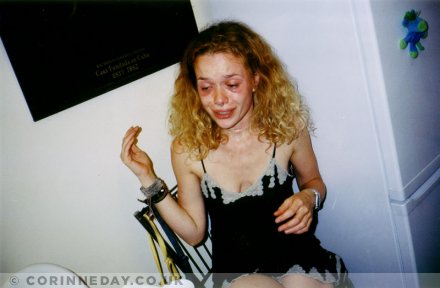
“Good friends make you face the truth about yourself and you do the same for them, as painful, or as pleasurable, the truth may be”
This is one of my favorite quotes from Day, as i completely agree with this. Your true friends and the community you surround yourself with, do have this affect on you as they can make you face things you wouldn’t normally, they encourage you to do this you may not also. You do the same for them as you know eachother the best so can influence them and yourself to do things.
The History and Development of Documentary Photography
The actual term ‘documentary’ was originally used by the English philosopher Jeremy Bentham in the early 19th century but as a reference within visual culture it was British film maker, John Grierson who famously in 1926 in a review of a film by Robert Flaherty about Polynesian youth, described the film as having ‘documentary value.’
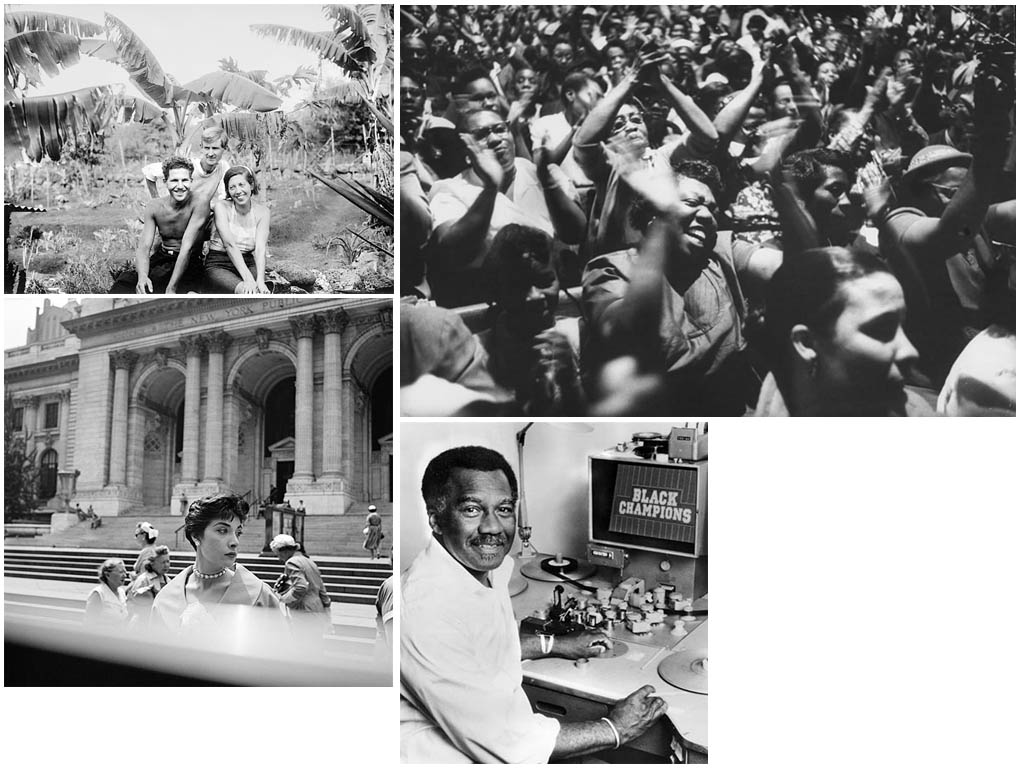

The birth of documentary as a popular form is clearly linked historically to the development of print technology and the proliferation of large-scale mass press in the 1920s and 30s of popular illustrated photo magazines and publications such as Life Magazine in the USA, Picture Post in Britain, Vu in France, Illustrierte in Germany, Drum in South Africa and many others.


These magazines which were based on the extensive use of photographs to tell stories to the needs of a newly literate urban population constitutes the start of the modern movement of photojournalism.


This new breed of photographers were the ones ‘out there’ bringing photographs home – a reporter of everyday life who supplied the pictures for this growing market.
Early Documentary Photography

By the time of the Civil War, the daguerreotype and other modernized equipment had entered the realm of middle-class consumer culture and established a popular follow up, often to the dismay of photographers promised and dedicated to uphold photography as an art form. Documentary photography developed during this period and was often consigned by art critics to become the new era of journalism, an association that persists to the present.
This consignment implied that documentary photographers were mere recorders, skilled technicians to be sure, but passive observers of the social scene but not wanted as the depiction of an artist. Documentary photographers accepted this characterization in order to burnish the perceived realism of their imagery.

Photographers like Edward S. Curtis have valued the art of documenting society as a way of reflecting the cultures of the early American lifestyles. Since then, the bounding of events which happened throughout history have been recorded through the lenses of moral choice, a question which over time has been issued in modern documentary photography.
Modern Documentary Photography
Two urban photographers, Jacob Riis and Lewis Hine, took up the effort to explore the “wilderness” of the inner city and thereby establish documentary photography as a tool of social reform. Lewis Hine used his photographs as instruments in changing the Child Labor laws in the United States. This opened up a new generation of demoting world change in order for democracy to demure and relax the laws cared for by young, mostly migrant children.

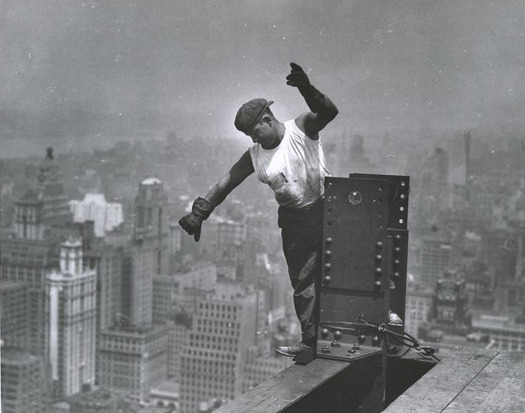
Photographers now revive the impacts crisis have towards communities in order for the public to react in a debating and democratic way. Documentary photography is now a looking glass tool into the eyes of people fighting against these events in order for governments and large parties to make and ensure political change on that place, in order to cut back on any future deconstruct. For instance, Indian documentary photographer Abir Abdullah captured some of the victims following the floods in Bangladesh in early 2004.

Documentary photography and its Ethics
The controversy between whether or not these photographers should be taken is an ongoing argument, but in my opinion, generally I think these photographers have a deeper meaning and are taken to exploit a problem so that change can occur rather than just take a good picture. Even though the photographs are upsetting, I think the sympathy for the child has made the public want to help more. Photographers who take photographs for the news to exploit an issue, do it not in a malicious way but they do it with sheer courage to show people that this is really happening and it needs to be stopped. It is more a reality check, why shouldn’t they take photos? It is what is happening in the world, are the public embarrassed to show the rest of the world that its happening in their country? There is positive and negative documentary photography and just because the pictures can be shocking to look at, its not like the photographer can manipulate what is really happening. In a world leaded by the media information, it is essential that society can be put into a position to trust the media; to believe that what its been shown and told corresponds to reality, so that a reaction against such reality could be properly achieved.
An example of controversy photograph is this picture above. In March 1993 Kevin Carter made a trip to Sudan. Near the village of Ayod, Carter found a girl who had stopped to rest while struggling to a United Nations feeding centre, where a vulture had landed nearby. He waited for twenty minutes until the vulture was close enough, positioned himself for the best possible image and only then chased the vulture away. At this point Carter was probably not yet aware that he had shot one of the most –or even the most- controversial photographs in the history of photojournalism.
The photograph was sold to The New York Times where it appeared for the first time on March 26, 1993. Practically overnight hundreds of people contacted the newspaper to ask whether the child had survived, leading the newspaper to run a special editor’s note saying the girl had enough strength to walk away from the vulture, but that her ultimate fate was unknown. On April 2, 1994 Nancy Buirski, a foreign New York Times picture editor, phoned Carter to inform him he had been awarded with the most coveted prize for photojournalism; the Pulitzer Prize for Feature Photography.

